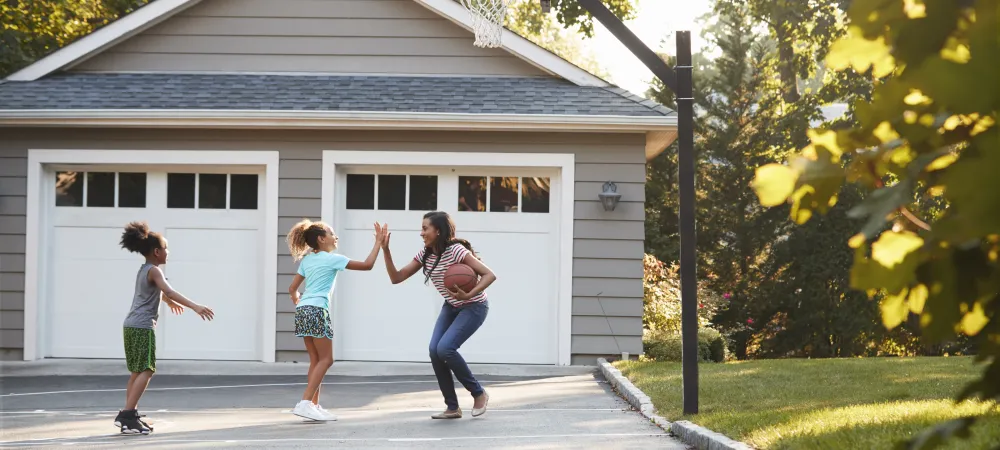How to Prevent a Carpenter Bee Infestation

Carpenter bees look similar to bumblebees. It can be hard to tell the two apart, but only one of these can cause damage to your home. Bumblebees have a hairy abdomen and are more yellow than carpenter bees, which have shiny black abdomens. Both of these bees, however, are pollinators. Here are some key facts you should know about carpenter bees, including what they are, why they come to your home, and how to get rid of them.
What do carpenter bees look like?
Carpenter bees are often mistaken for bumblebees due to their similar size and coloring. However, while bumblebees have fury yellow markings on their abdomens, carpenter bees do not. Moreover, there are seven different species of carpenter bees, each of which varies somewhat in appearance. While most have a black and yellow coloring, some are more metallic in appearance. Also, unlike most other bees who live in social colonies, carpenter bees are solitary insects that build individual nests for themselves.
Signs of a carpenter bee infestation
Carpenter bees will return to the same place year after year. This means they can be hard to get rid of since you might think they are gone for good, but then they come back again. This means that these bees can continue to weaken the structures they are nesting in over the years. There are some signs you can look out for. Here are the signs of a carpenter bee infestation:
- The appearance of small holes on the side of buildings.
- Scratching sounds that seem like they’re coming from the inside of your walls.
- Wood shavings underneath small holes.
When is carpenter bee season and what is it?
Although carpenter bees can survive year-round in Texas, they still follow a pattern of a yearly breeding cycle. Most commonly this breeding cycle starts in April. This is when you can expect carpenter bee activity to begin rising. Another thing we should mention is that, as the temperature increases, so will the carpenter bee population and activity. This means the further into summer we go, the more you can expect these wood-destroying pests to be out and about, potentially threatening your home.
Are carpenter bees dangerous?
Unlike most other bees, the primary threat from carpenter bees is not their stingers. In fact, male carpenter bees are unable to sting and females will only do so with provocation. Instead, carpenter bees threaten our property. Carpenter bees bore circular holes into wood to create nests for themselves. Furthermore, female carpenter bees will bore holes into wood to create a safe place to lay eggs. Not only can these holes prove costly to repair as they frequently occur in siding, eaves, and frames, but if females lay eggs in these holes, the larvae can attract woodpeckers which can cause even more damage to your property.
How can you keep carpenter bees away from your house?
Because carpenter bees rely on softwood for nests, they are often attracted to the exterior of houses. Carpenter bees will make nests on porches or other wooden overhangs around your home, which could cause damage that could be dangerous or cause other problems. Some tips for avoiding a carpenter bee infestation are:
- Ensure all wood on the outside of your home is stained or painted as they prefer bare wood.
- Keep woodpiles away from the exterior of your home.
- Seal cracks in your home’s foundation and exterior with caulk.
- Install window and door screens and repair any tears in existing screens.
- Close any nests during the fall; this will prevent bees from reusing the same tunnels or using them as hideouts during the winter
- Purchase a carpenter bee trap. There are several wooden traps on the market that will attract and trap carpenter bees to keep them off your home.
How do you know if you have carpenter bees?
If you have a carpenter bee problem, it's likely that you will see these bees flying around your house, as they don’t travel far from their nest. You might also notice the holes they create; these holes can be perfectly round, and you might see frass, which is the excess sawdust from their tunnels.
Should you get professional help for carpenter bees?
Yes, you should contact a local pest control professional to help you take care of carpenter bees. If carpenter bees invade, what is your plan of action? If you don’t have one, consider this. If carpenter bees invade your home, the first thing you should do is pick up the phone. Next, dial the number for Bill Clark Bugsperts. We will schedule a time ASAP to come out and fully treat your home and property for these destructive pests. Quick and easy, and in the least invasive way as possible. It’s our guaranty. If that sounds good to you, give us a call. One of our experts will be happy to find a solution for you today.

